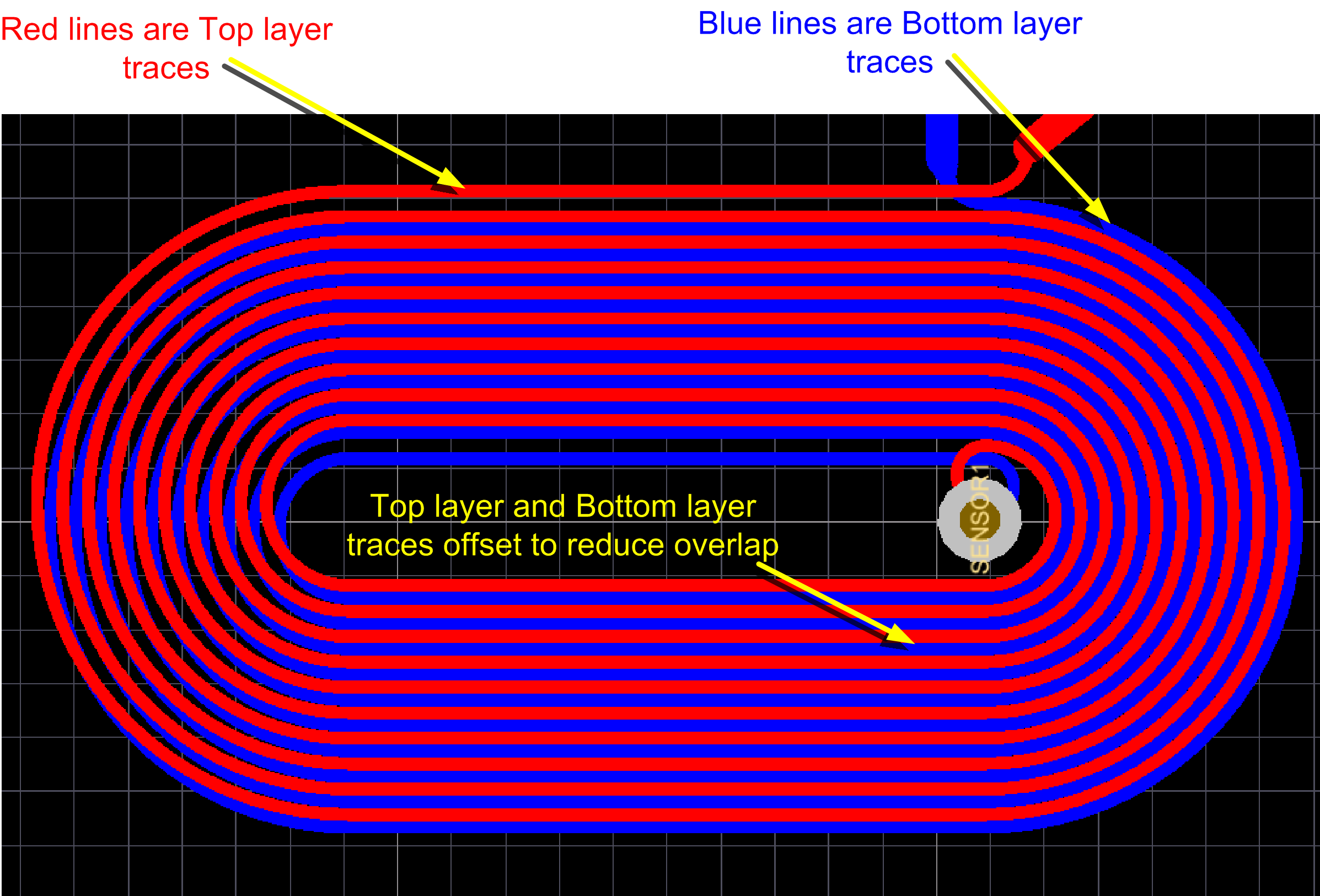SNOA961A February 2017 – February 2023 LDC2112 , LDC2114 , LDC3114 , LDC3114-Q1
- Inductive Touch System Design Guide for HMI Button Applications
- 1Mechanical Design
- 2Sensor Design
- 3Summary
- 4Revision History
2.4.6.1 Sensor Parasitic Capacitance
The individual turns of an inductor have a physical area and are separated by a dielectric, which manifests as small parasitic capacitor across each turn. These parasitic capacitances should be minimized for optimum sensor performance. One simple but effective technique for multi-layer sensors to reduce the parasitic capacitance is to offset any parallel traces between layers, as shown in #T4726003-70.
 Figure 2-9 Offsetting Traces to Reduce Parasitic Capacitance
Figure 2-9 Offsetting Traces to Reduce Parasitic Capacitance